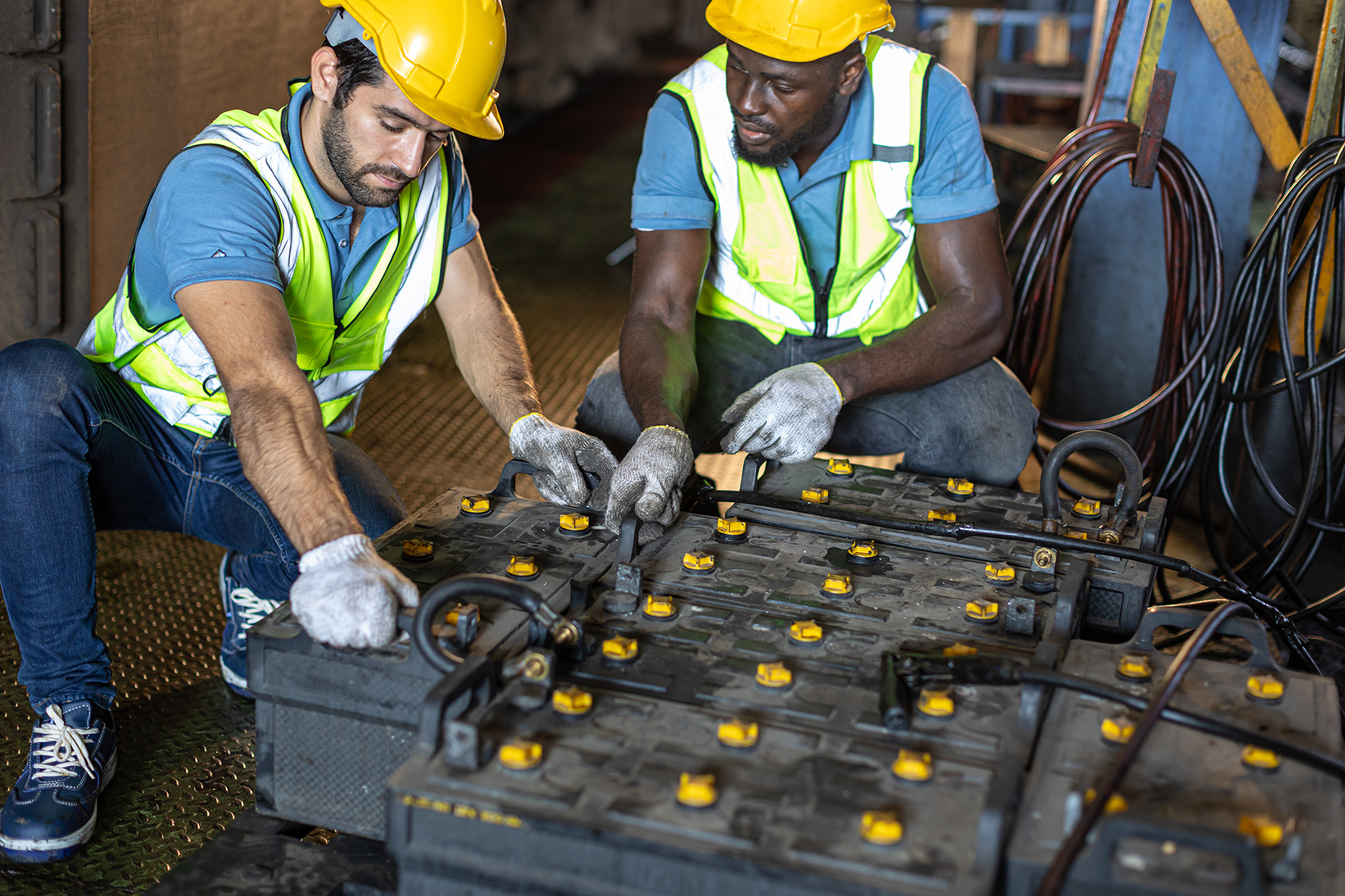
The rise of electric vehicles (EVs) and renewable energy has spotlighted green tech battery recycling as a key to sustainability. Lithium-ion (Li-ion) batteries, powering everything from smartphones to grid storage, pose environmental challenges at end-of-life. Innovative battery recycling methods are emerging, focusing on eco-friendly recycling tech that minimizes emissions, conserves resources, and recovers valuable materials efficiently. These advancements reduce reliance on mining, cut pollution, and support a circular economy, making battery recycling more viable and planet-friendly.
The Need for Green Tech in Battery Recycling
Traditional recycling methods like pyrometallurgy are energy-intensive and emit high greenhouse gases (GHGs). Hydrometallurgy, while better, often uses harsh chemicals. Green tech battery recycling addresses these issues with low-impact innovations, achieving higher recovery rates with less environmental harm.
With battery waste projected to reach 11 million tons by 2030, eco-friendly recycling tech is essential. It not only mitigates toxic leaks into soil and water but also recovers critical minerals like lithium and cobalt, reducing mining's ecological footprint.
Breakthroughs in Hydrometallurgical Innovations
Hydrometallurgy has seen green upgrades, using organic acids instead of inorganic ones for leaching. Citric acid-based processes recover 98% cobalt and 99% lithium in one hour, versus 10-12 hours traditionally.
A citric acid and ethylene glycol solution at Oak Ridge National Laboratory leaches cathodes efficiently, producing battery-grade materials without extra chemicals, slashing costs and byproducts.
Another innovation uses tartaric acid for selective leaching of LiFePO4 batteries, recovering over 99% lithium as high-purity Li2CO3 under mild conditions, generating minimal waste.
These methods lower energy use and avoid toxic wastes, making hydrometallurgy more eco-friendly.
Bioleaching: Nature-Inspired Recycling
Bioleaching employs microbes to extract metals, offering a low-energy alternative. Bacteria like Acidithiobacillus ferrooxidans dissolve cathodes, recovering Co and Li with 90% efficiency.
This process operates at ambient temperatures, reducing energy by 80% compared to smelting. It's scalable for industrial use, with pilot plants showing promise for mixed battery waste.
Direct Recycling: Preserving Material Value
Direct recycling maintains battery structures, avoiding breakdown. Innovative battery recycling here includes low-temperature plasma to remove contaminants from cathode powder.
Princeton NuEnergy's plasma method reduces water use by 70% and emissions by 80%, mechanically separating materials and regenerating cathodes cheaper than new ones.
Ultrasonic separation is 100 times faster and half the cost of virgin production, preserving high-value components for reuse.
Direct methods achieve 95% recovery, supporting closed-loop systems where recycled cathodes match new ones in performance.
Relithiation Techniques
Chemical relithiation restores lithium to spent cathodes. A self-heating reaction at Notre Dame regenerates Co, Li, and Ni with 90% less energy, producing materials with near-original capacity.
This eco-friendly recycling tech minimizes mining needs, cutting habitat destruction and water contamination.
Pyrometallurgical Advances with Lower Impact
Traditional pyrometallurgy is evolving greener. Reductive calcination operates at lower temperatures without fossil fuels, yielding more lithium than standard smelting.
Redwood Materials' process emits 58-81% less GHGs, uses 72-88% less water, and 77-89% less energy than mining.
Integrating renewables in facilities further reduces carbon footprints, making pyrometallurgy viable for green tech battery recycling.
Emerging Technologies: Plasma and Supercritical Fluids
Plasma technology ionizes gases to break down batteries, recovering metals with minimal emissions. It's fast and handles mixed chemistries effectively.
Supercritical CO2 extraction uses pressurized carbon dioxide to leach metals, consuming CO2 and producing green hydrogen as a byproduct. This carbon-negative approach recovers nearly all materials without toxic solvents.
These innovative battery recycling methods are scalable, with prototypes showing 99% purity in recovered lithium salts.
Nanotechnology Enhancements
Nanoparticles improve leaching selectivity. Magnetic nanomaterials separate metals efficiently, reducing chemical use by 50%.
Nano-filtration membranes purify leachates, recycling water and minimizing waste in hydrometallurgical processes.
AI and Automation in Eco-Friendly Recycling
AI optimizes sorting and process control. Machine learning identifies battery chemistries via spectroscopy, improving efficiency by 30%.
Robotic dismantling handles complex designs safely, reducing human exposure to hazards. Automated systems adjust parameters in real-time for maximum recovery.
These tech integrations make eco-friendly recycling tech more cost-effective and scalable.
Case Studies of Green Tech Implementations
Redwood Materials' Nevada facility uses reductive calcination, processing 40,000 tons annually with low emissions.
Oak Ridge's pilot plant demonstrates citric acid leaching, scaling to industrial levels with 100% cobalt recovery.
Princeton NuEnergy partners for plasma recycling, aiming for gigafactory integration by 2026.
These examples show practical benefits: lower costs, higher purity, and reduced environmental impact.
Global Initiatives
China leads with bioleaching plants recovering 66% of batteries. EU mandates drive innovations like supercritical methods for 95% recovery targets.
Environmental and Economic Impacts
Green tech battery recycling cuts GHGs by up to 90%, conserves water, and prevents pollution. It meets 9% lithium demand by 2025, reducing mining reliance.
Economically, methods like direct recycling save 30-38% costs. Startups attract investments, creating jobs in sustainable sectors.
Second-life applications extend benefits, reusing batteries before recycling.
Challenges and Future Outlook
Scaling innovations requires investment. Standardizing battery designs aids recycling.
Future trends include hybrid methods combining bioleaching with AI for 99% recovery. By 2030, green tech could recycle 75% of EV batteries.
Policy support, like U.S. incentives, accelerates adoption, ensuring a sustainable battery ecosystem.
Conclusion
Innovations in green tech battery recycling are transforming the industry with eco-friendly recycling tech. From organic leaching to plasma and AI, these advances minimize impact while maximizing recovery. Embracing innovative battery recycling ensures a greener future for energy storage.

.jpg)
.png)
.png)
.svg)